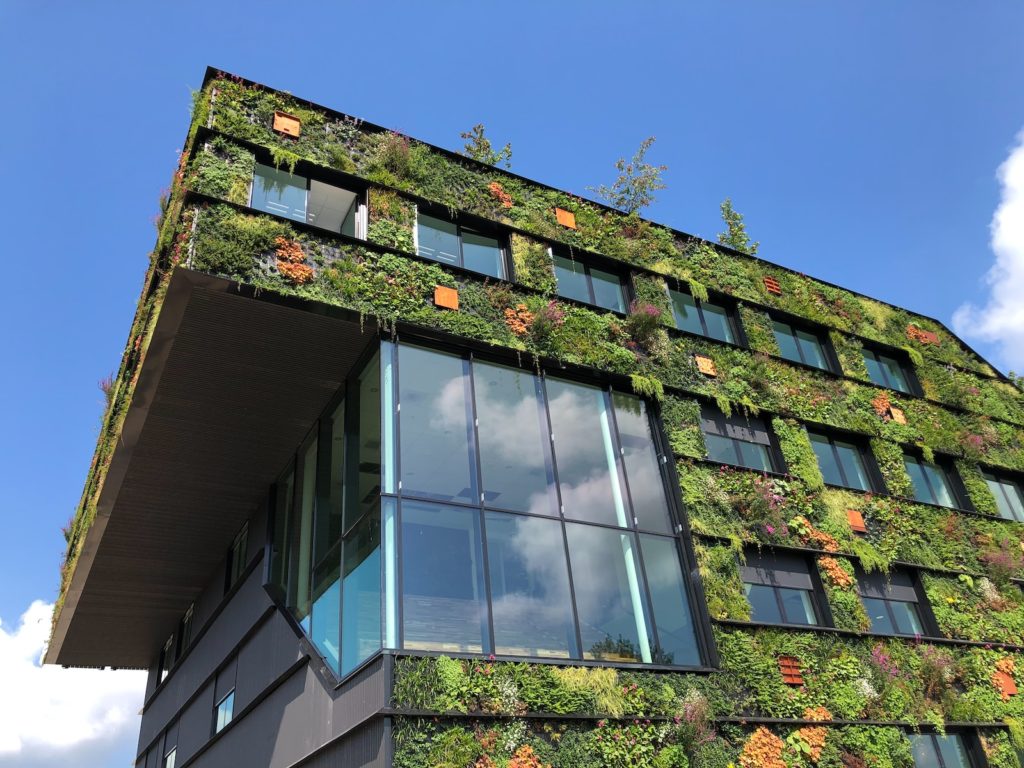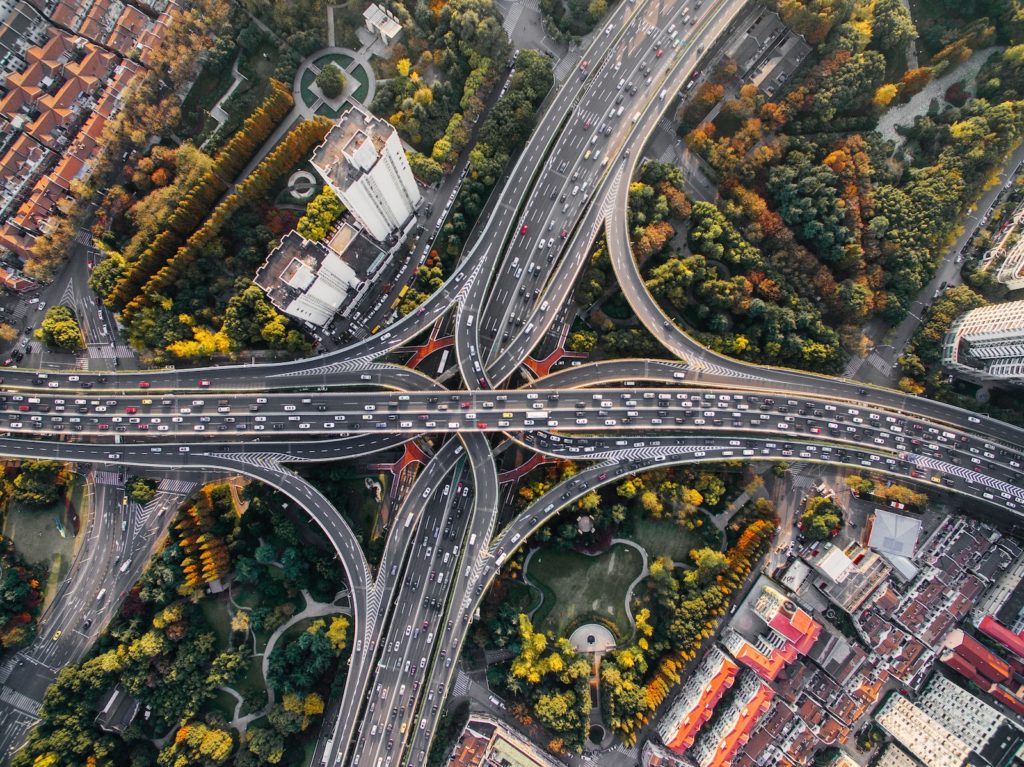Green Infrastructure for Creating Resilient Cities will delve into the fascinating world of how green infrastructure plays a crucial role in building resilient cities. By mitigating the effects of climate change, managing flooding, and enhancing biodiversity, green infrastructure is not only essential for urban development but also for the overall well-being of our planet. Discover the innovative strategies and practices that are transforming cities into resilient havens, where nature and urban life coexist harmoniously.
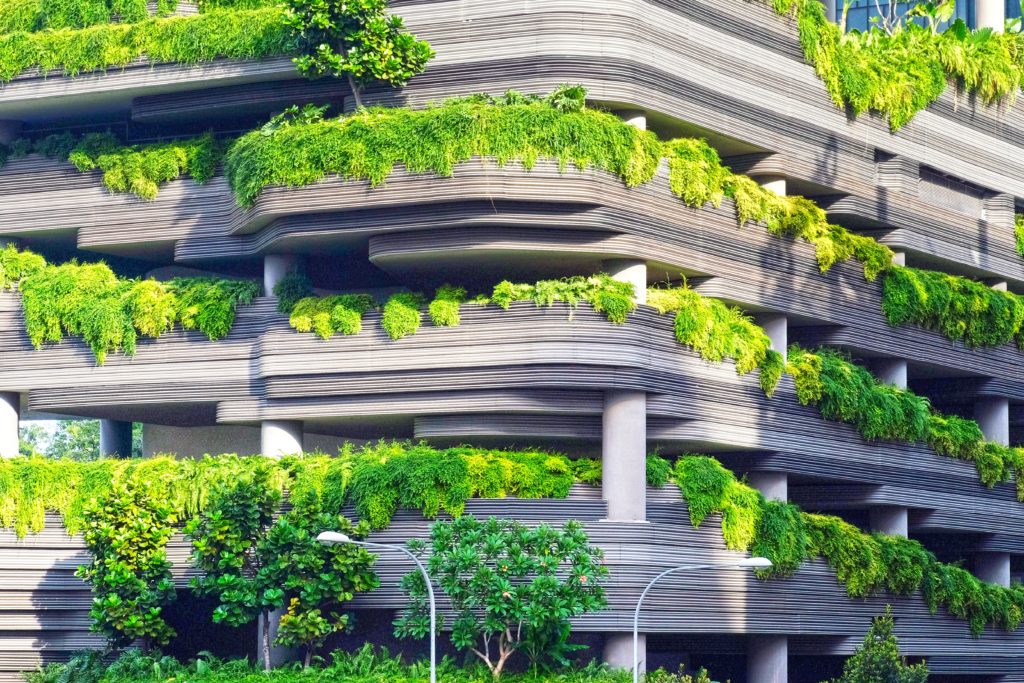
1. Mitigating Climate Change Effects
Green infrastructure plays a crucial role in mitigating the effects of climate change in urban areas. By implementing various strategies and practices, cities can reduce the negative impacts and build resilience against climate change.
1.1 Reducing Urban Heat Island Effect
Urban heat islands are a common phenomenon in cities, where the temperature is significantly higher than in surrounding rural areas. Green infrastructure can help combat this effect by incorporating vegetation and promoting the use of reflective and cool materials in urban design. By increasing the amount of green spaces, such as parks and rooftop gardens, cities can effectively reduce surface temperatures and create a more comfortable and livable environment for residents.
1.2 Lowering Energy Consumption
Energy consumption in cities is a major contributor to greenhouse gas emissions and climate change. Green infrastructure offers solutions to lower energy consumption by incorporating energy-efficient technologies, such as green roofs and solar panels, into urban planning. Additionally, promoting the use of renewable energy sources and improving energy efficiency in buildings can significantly reduce the carbon footprint of urban areas.
1.3 Minimizing Greenhouse Gas Emissions
Green infrastructure also plays a vital role in minimizing greenhouse gas emissions. By promoting sustainable transportation options, such as walking, cycling, and public transit, cities can reduce the reliance on fossil fuel-powered vehicles, thereby decreasing emissions. Furthermore, implementing green building codes and encouraging the use of energy-efficient materials can significantly contribute to reducing greenhouse gas emissions from the built environment.
2. Managing Flooding
Flooding is a natural disaster that can cause severe damage to urban areas. Green infrastructure provides effective tools for managing and mitigating the impacts of flooding, making cities more resilient.
2.1 Implementing Green Stormwater Infrastructure
One of the key strategies for managing urban flooding is the implementation of green stormwater infrastructure. This involves the use of nature-based solutions, such as rain gardens, bioswales, and constructed wetlands, to reduce stormwater runoff and enhance water infiltration. By diverting and storing rainwater, green stormwater infrastructure can help prevent flooding and minimize the strain on traditional stormwater management systems.
2.2 Promoting Permeable Surfaces
In addition to green stormwater infrastructure, promoting permeable surfaces plays a crucial role in managing flooding. Permeable surfaces, such as permeable pavements and porous concrete, allow rainwater to infiltrate into the ground, reducing the amount of runoff that enters the stormwater system. This not only helps prevent flooding but also replenishes groundwater reserves, providing long-term benefits to the ecosystem.
2.3 Creating Natural Water Retention Areas
Creating natural water retention areas, such as wetlands and floodplain restoration, can effectively manage flooding and provide additional benefits for the environment. These areas act as natural sponges, absorbing excess water during heavy rainfall events and slowly releasing it over time. By preserving and restoring these natural water retention areas, cities can enhance flood resilience and provide habitat for diverse plant and animal species.
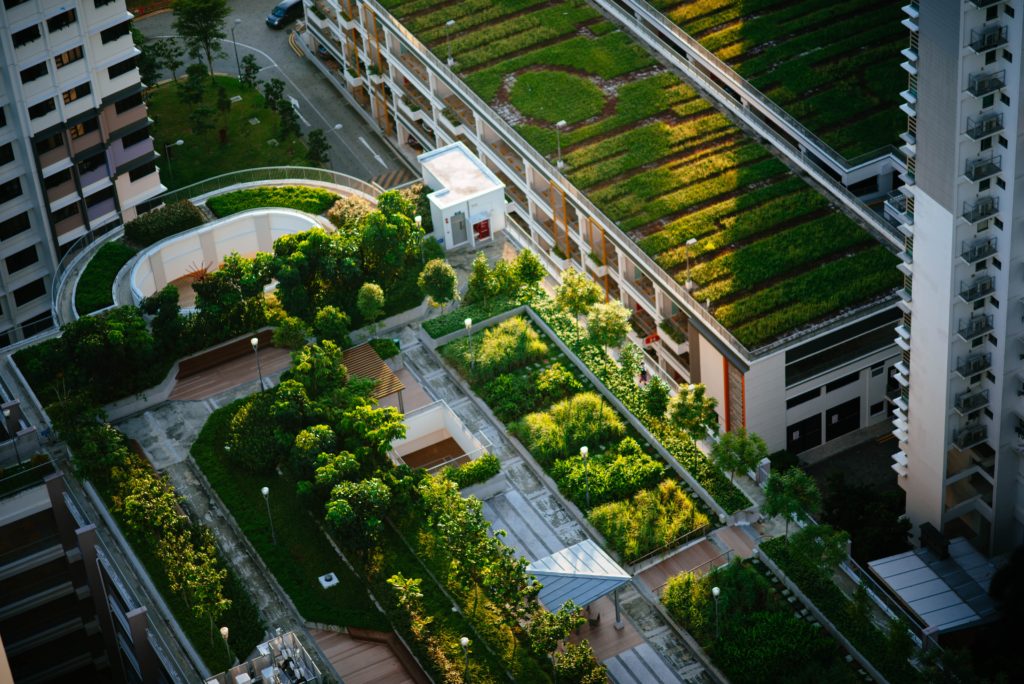
3. Enhancing Biodiversity
Green infrastructure plays a crucial role in enhancing biodiversity in urban areas, creating healthier and more vibrant ecosystems.
3.1 Establishing Urban Green Spaces
Establishing urban green spaces, such as parks, gardens, and green rooftops, is essential for enhancing biodiversity. These green spaces provide habitat for a variety of plant and animal species, including pollinators like bees and butterflies. By incorporating native plants and creating diverse ecosystems, cities can support a wide range of species and foster biodiversity.
3.2 Developing Ecological Corridors
Developing ecological corridors is another important strategy for enhancing biodiversity in urban areas. These corridors connect fragmented habitats, allowing wildlife to move freely between different green spaces. By providing these interconnected pathways, cities can create an urban network that supports biodiversity and promotes the healthy functioning of ecosystems.
3.3 Supporting Native Plant and Animal Species
Supporting native plant and animal species is crucial for enhancing biodiversity in urban areas. Native species are well-adapted to the local climate and provide essential ecological functions, such as pollination and pest control. By promoting the use of native plants in landscaping and creating habitat for native animal species, cities can contribute to the preservation and restoration of biodiversity.
4. Engaging Local Communities to adopt Green Infrastructure for Creating Resilient Cities
Engaging local communities is essential for the successful implementation of green infrastructure projects in cities. By involving residents, businesses, and community organizations, cities can foster a sense of ownership and create a shared vision for creating resilient and sustainable urban environments.
4.1 Encouraging Public Participation
Encouraging public participation is key to building community support and involvement in green infrastructure initiatives. Cities can host public meetings, workshops, and forums to gather input and ideas from the community. By actively involving residents in the decision-making process, cities can ensure that green infrastructure projects meet the needs and preferences of the local community.
4.2 Promoting Education and Awareness
Promoting education and awareness is crucial for fostering a culture of sustainability and environmental stewardship among residents. Cities can organize educational programs and campaigns to raise awareness about the benefits of green infrastructure and the importance of sustainable practices. By providing information and resources, cities can empower individuals to take action and actively participate in building resilient communities.
4.3 Collaborating with Stakeholders
Collaboration with stakeholders, including non-profit organizations, businesses, and government agencies, is vital for the successful implementation of green infrastructure projects. By working together, cities can leverage the expertise, resources, and networks of various stakeholders to achieve common goals. Collaboration can also foster innovation and ensure the long-term sustainability of green infrastructure initiatives.
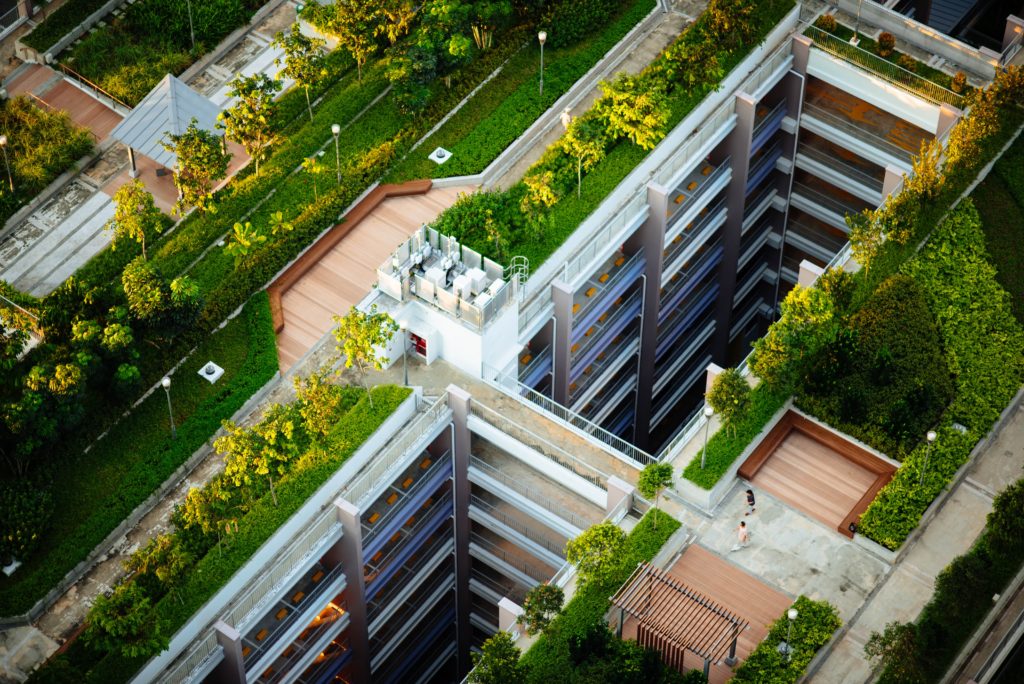
5. Integrating Urban Planning with Green Infrastructure for Creating Resilient Cities
Integrating green infrastructure into urban planning is crucial for creating resilient and sustainable cities. By incorporating green infrastructure principles and practices into land use and development decisions, cities can effectively address environmental challenges and improve the quality of urban life.
5.1 Adopting Green Building Codes
Adopting green building codes is a key step in integrating green infrastructure into urban planning. These codes establish guidelines and requirements for energy-efficient and sustainable building design and construction. By requiring developers to incorporate green features, such as green roofs, rainwater harvesting systems, and energy-efficient materials, cities can ensure that new buildings contribute to the overall resilience and sustainability of the urban environment.
5.2 Incorporating Vegetation in Urban Design
Incorporating vegetation in urban design is essential for creating a more sustainable and aesthetically appealing urban environment. Cities can prioritize the use of street trees, green walls, and vertical gardens in their planning and development processes. Vegetation not only enhances the visual appeal of the city but also provides numerous benefits, such as shading, air purification, and habitat creation.
5.3 Green Roof and Facade Implementation
Green roof and facade implementation is another effective strategy for integrating green infrastructure into urban planning. Green roofs, which are covered with vegetation, help reduce energy consumption, improve stormwater management, and provide habitat for biodiversity. Similarly, green facades, such as climbing plants on building walls, offer similar benefits and contribute to a greener and more sustainable urban landscape.
6. Improving Air Quality
Improving air quality in urban areas is essential for creating healthy and livable cities. Green infrastructure plays a crucial role in filtering pollutants, reducing emissions, and enhancing overall air quality.
6.1 Planting Trees and Vegetation
Planting trees and vegetation is an effective strategy for improving air quality. Trees act as natural filters, absorbing pollutants such as carbon dioxide, nitrogen dioxide, and particulate matter. By planting a variety of tree species throughout the city, cities can significantly reduce air pollution and create a healthier environment for residents.
6.2 Enhancing Air Filtration
Enhancing air filtration through green infrastructure can further improve air quality in urban areas. Green walls, also known as living walls, are vertical structures covered with vegetation that can effectively filter pollutants from the air. By installing green walls in strategic locations, such as near busy roads or industrial areas, cities can reduce the exposure of residents to harmful pollutants and create cleaner and safer urban environments.
6.3 Reducing Air Pollutants
Green infrastructure can play an active role in reducing air pollutants by promoting sustainable transportation options. By encouraging walking, cycling, and the use of public transit, cities can reduce the reliance on private vehicles and decrease fuel combustion-related emissions. Additionally, promoting the use of electric and low-emission vehicles can further contribute to reducing air pollutants and improving air quality in urban areas.
7. Creating Sustainable Transportation Systems
Creating sustainable and efficient transportation systems is crucial for reducing congestion, improving air quality, and promoting a healthier and more livable urban environment. Green infrastructure can play a significant role in achieving these goals.
7.1 Developing Walking and Cycling Infrastructure
Developing walking and cycling infrastructure is essential for promoting sustainable and active modes of transportation. By investing in pedestrian-friendly sidewalks, protected bike lanes, and bike-sharing programs, cities can encourage residents to choose walking and cycling as viable alternatives to driving. These initiatives not only reduce congestion and emissions but also promote physical activity and improve public health.
7.2 Promoting Public Transit
Promoting the use of public transit is another important aspect of creating sustainable transportation systems. Efficient and reliable public transit options, such as buses, trams, and trains, can significantly reduce the number of cars on the road, thereby reducing congestion and emissions. By investing in the expansion and improvement of public transit networks, cities can provide residents with convenient and eco-friendly transportation alternatives.
7.3 Encouraging Electric and Low-Emission Vehicles
Encouraging the use of electric and low-emission vehicles is crucial for reducing the carbon footprint of transportation. Cities can provide incentives, such as charging infrastructure for electric vehicles and preferential parking for clean vehicles, to promote their adoption. By actively supporting the transition to electric and low-emission vehicles, cities can contribute to reducing air pollution and dependence on fossil fuels.
8. Enhancing Human Health and Well-being
Green infrastructure plays a significant role in enhancing human health and well-being in urban areas. By providing access to nature, promoting physical activity, and improving mental health, green infrastructure contributes to a higher quality of life for urban residents.
8.1 Providing Accessible Recreation Areas
Providing accessible recreation areas, such as parks, playgrounds, and green spaces, is essential for promoting physical activity and improving overall well-being. These areas offer opportunities for exercise, relaxation, and socialization, contributing to the physical and mental health of residents. By ensuring that all communities have access to these recreational amenities, cities can create a more equitable and inclusive urban environment.
8.2 Improving Mental Health and Stress Reduction
Green infrastructure has been proven to have a positive impact on mental health and stress reduction. Access to nature and green spaces has been associated with lower stress levels, improved mood, and enhanced cognitive function. By creating and preserving urban green spaces, cities can provide residents with natural environments that promote mental well-being and provide respite from the stresses of urban life.
8.3 Increasing Physical Activity Opportunities
Increasing physical activity opportunities through green infrastructure is vital for combating sedentary lifestyles and promoting a healthy population. By providing safe and accessible walking and cycling paths, exercise stations, and sports facilities, cities can encourage residents to engage in regular physical activity. These initiatives not only promote better overall health but also contribute to the prevention of chronic diseases, such as obesity and cardiovascular conditions.
9. Building Green Infrastructure for Creating Resilient Cities
Building green infrastructure networks is crucial for creating resilient and interconnected urban environments. By establishing green corridors, linking green spaces, and creating multi-functional green infrastructure, cities can maximize the benefits of green infrastructure and enhance their overall environmental performance.
9.1 Establishing Green Corridors
Establishing green corridors involves creating interconnected networks of green spaces, such as parks, riverfronts, and linear greenways. These corridors provide wildlife habitat, recreational opportunities, and improve the overall connectivity of urban ecosystems. By preserving and connecting existing green spaces, cities can create wildlife corridors and promote biodiversity within the urban landscape.
9.2 Linking Green Spaces
Linking green spaces is another crucial aspect of building green infrastructure networks. By creating pedestrian and cycling connections between parks, gardens, and other green areas, cities can encourage residents to explore the urban environment and connect with nature. These connections also promote active transportation and reduce the need for car travel, thereby enhancing sustainability and reducing congestion.
9.3 Creating Multi-functional Green Infrastructure
Creating multi-functional green infrastructure involves integrating different features and functions into a single project or space. For example, a green roof can provide stormwater management, energy efficiency, and habitat creation simultaneously. By implementing multi-functional green infrastructure projects, cities can maximize the benefits and optimize the use of limited urban space. This approach allows cities to address multiple environmental challenges effectively and promote a holistic approach to urban sustainability.
10. Securing Funding and Resources to promote Green Infrastructure for Creating Resilient Cities
Securing funding and resources is essential for the successful implementation of green infrastructure projects in cities. By identifying funding opportunities, leveraging public-private partnerships, and prioritizing resource allocation, cities can ensure the long-term sustainability and resilience of their green infrastructure initiatives.
10.1 Identifying Funding Opportunities
Identifying funding opportunities is a crucial step in securing financial resources for green infrastructure projects. Cities can explore various funding sources, such as grants, private investments, and government programs, to finance their initiatives. By actively seeking out and applying for funding opportunities, cities can access the necessary resources to implement and maintain green infrastructure projects.
10.2 Leveraging Public-Private Partnerships
Leveraging public-private partnerships is another effective strategy for securing funding and resources for green infrastructure. By collaborating with private companies, non-profit organizations, and community groups, cities can access additional expertise, funding, and support. These partnerships can help cities leverage resources and implement green infrastructure projects that align with the goals and priorities of both the public and private sectors.
10.3 Prioritizing Resource Allocation
Prioritizing resource allocation is key to ensuring the long-term sustainability of green infrastructure projects. Cities must allocate sufficient financial resources, staff, and expertise to effectively implement and maintain green infrastructure initiatives. By prioritizing green infrastructure in budgeting and planning processes, cities can demonstrate their commitment to sustainability and resilience while integrating green infrastructure into the fabric of urban development.
Additional Information and Resources for Economic Benefits of Green Infrastructure
https://www.epa.gov/sites/default/files/2015-10/documents/cnt-lancaster-report-508_1.pdf
https://cnt.org/sites/default/files/publications/CNT_Value-of-Green-Infrastructure.pdf

